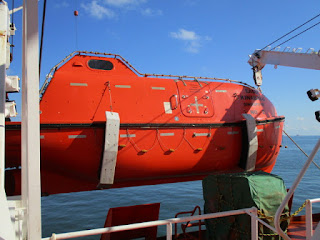WONDERS OF THE WORLD
GREAT WALL OF CHINA
The Great Wall of China is a series of fortifications
made of stone, brick, tamped earth, wood, and other materials, generally built
along an east-to-west line across the historical northern borders of China to
protect the Chinese states and empires against the raids and invasions of the
various nomadic groups of the Eurasian Steppe. Several walls were being built
as early as the 7th century BC; these, later joined together and made
bigger and stronger, are now collectively referred to as the Great Wall.
Especially famous is the wall built 220–206 BC by Qin Shi Huang, the first
Emperor of China. Little of that wall remains. Since then, the Great Wall has
on and off been rebuilt, maintained, and enhanced; the majority of the existing
wall is from the Ming Dynasty.
TAJ MAHAL
The Taj Mahal was designated as a UNESCO World Heritage Site
in 1983 for being “the jewel of Muslim art in India and one of the universally
admired masterpieces of the world’s heritage”. Described by Nobel laureate
Rabindranath Tagore as “the tear-drop on the cheek of time”, it is regarded by
many as the best example of Mughal architecture and a symbol of India’s rich
history. The Taj Mahal attracts 7–8 million visitors a year.
PETRA,JORDAN
Petra (Arabic: البتراء,
Al-Batrāʾ; Ancient Greek: Πέτρα), originally known to the Nabataeans as Raqmu,
is a historical and archaeological city in southern Jordan. The city is famous
for its rock-cut architecture and water conduit system. Another name for Petra
is the Rose City due to the color of the stone out of which it is carved.
COLOSSEUM,ROME
The Colosseum or Coliseum, also known as the Flavian
Amphitheatre (Latin: Amphitheatrum Flavium; Italian: Anfiteatro
Flavio [amfiteˈaːtro ˈflaːvjo] or Colosseo [kolosˈsɛːo]), is an oval
amphitheatre in the centre of the city of Rome, Italy. Built of concrete and
sand, it is the largest amphitheatre ever built. The Colosseum is situated just
east of the Roman Forum. Construction began under the emperor Vespasian in AD
72, and was completed in AD 80 under his successor and heir Titus. Further
modifications were made during the reign of Domitian (81–96). These three
emperors are known as the Flavian dynasty, and the amphitheatre was named in
Latin for its association with their family name (Flavius).
MACHU PICCHU,PERU
Machu Picchu (Spanish pronunciation: [ˈmatʃu ˈpiktʃu])
or Machu Pikchu ([ˈmɑtʃu ˈpixtʃu]), is a 15th-century Inca citadel
situated on a mountain ridge 2,430 metres (7,970 ft) above sea level. It
is located in the Cusco Region, Urubamba Province, Machupicchu District in Peru, above
the Sacred Valley, which is 80 kilometres (50 mi) northwest of Cuzco and
through which the Urubamba River flows.
Machu Picchu was
built in the classical Inca style, with polished dry-stone walls. Its three
primary structures are the Inti Watana, the Temple of the Sun,
and the Room of the Three Windows. Most of the outlying buildings have
been reconstructed in order to give tourists a better idea of how they
originally appeared. By 1976, thirty percent of Machu Picchu had been restored and
restoration continues.







Comments
Post a Comment